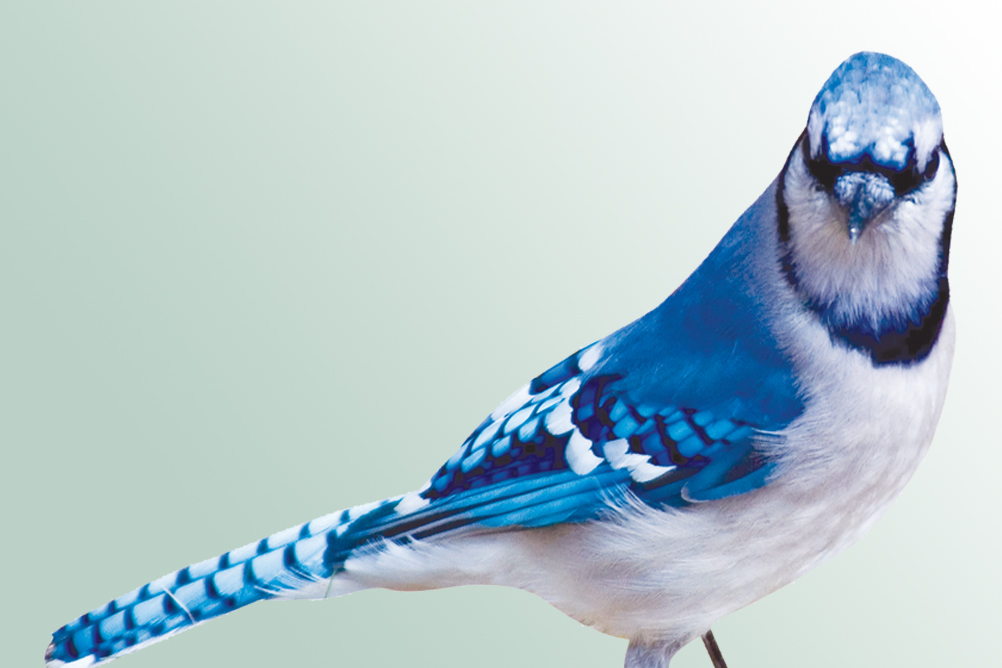Family-focused bullies of the skies BLUE JAYS

By Linda C. DOLAK
OSU Ext. master gardener volunteer
The blue jay (Cyanocitta cristata) is a common, large-bodied bird.
It is classified as a song bird, with a cocky crest and blue, white, and black feathers. The color in the feathers is actually brown, but the blue color is caused by scattering light through altered (modified) cells on the surface of the feather barbs (tips).
The blue jay has a very noisy call (Jay! Jay! Jay!), and is known for its intelligence and its complicated social system, which includes close family ties.
Migration is known to take place by flocks along the Great Lakes and the Atlantic Ocean. However, migration remains a mystery, even to those who study the blue jay, because some of the birds remain all year in the same area. It appears that young birds more commonly migrate than the adults.
The blue jay is often not a favorite of some people because of its behavior. It is known to take the eggs and nestlings of other birds.
The jay will also consume most of the seeds and corn in feeders.
It is common for other birds to scatter as the blue jay swoops, screaming, to the feeder.
Most of the diet, however, appears to be insects and nuts, but also includes frogs and mice.
The blue jay is sometimes misunderstood. It will commonly take acorns from oak trees, as many as they can fit in the mouth, and bury them in various locations for a later date. Sometimes, it doesn’t remember all of them and many of the acorns go forgotten. Therefore, the jay is actually helping the environment by increasing the numbers of oak trees.
As far as the bird’s call, it can mimic other birds, especially the red-shouldered hawk, alerting other jays that a hawk is around, or deceiving other species into believing a hawk is close.
The jay is commonly seen in groups, some of them representing families made up of the mating adults and three to five of their hatchlings.
Groups of blue jays are extremely tolerant of each other.
Courtship of blue jays starts in February, and involves intricate behaviors.
Usually, a group of three to 10 jays forms in late winter, with the emphasis on one female whose actions determine activities of the group.
When the female flies, the rest fly; when she lands, the rest land.
There is usually a large amount of noise when the birds are in the air, and a short silence at landing.
The quiet is followed by hostile head-bobbing and feather-fluffing by the males.
The courtship group gets smaller as time passes, until there is only a pair of jays remaining.
The pair then carries on with quiet feather-fluffing and ceremonial feeding before mating.
The pair works together to build cup-shaped nests, usually making three to five “trial nests” before making the final one.
Sometimes, the mating pair will take over another bird species’ nest to use for a breeding nest.
The eggs can be blue, green or yellow with brown or gray spots.
Jays are over 8 inches long, with the male being slightly longer than the female.
Other than that, there is no major difference between the genders.
The oldest blue jay studied by researchers lived to be 17 years, 6 months old. Most Jays live about 7 years. One captive female lived for 26 years, 3 months.
To learn more about blue jays, go to: http://go.osu.edu/bluejay.
 43
43
